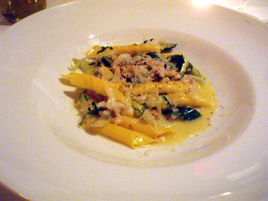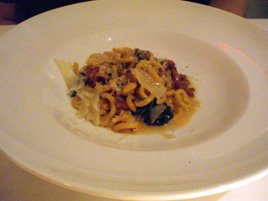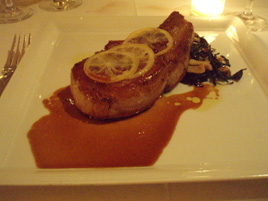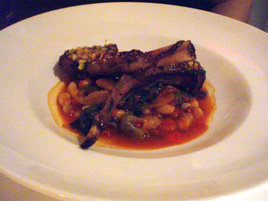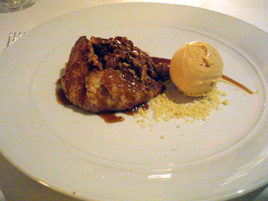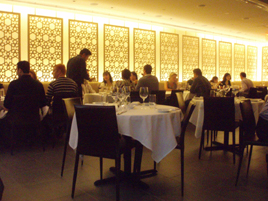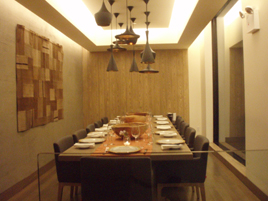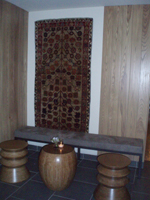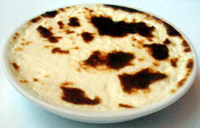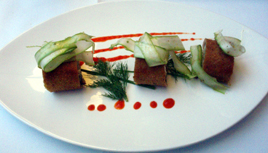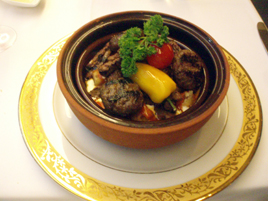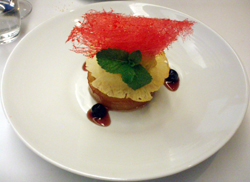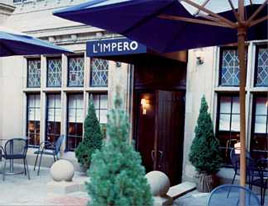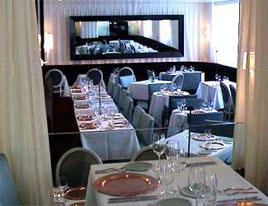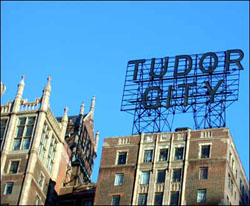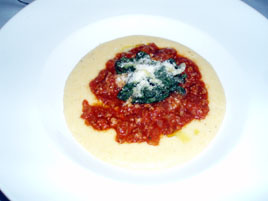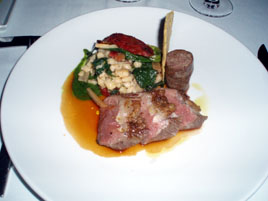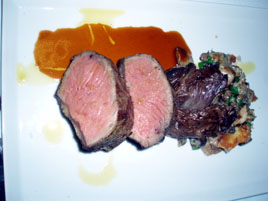Sofia Wine Bar
 Thursday, August 30, 2012 at 08:33PM
Thursday, August 30, 2012 at 08:33PM 
 Nearly six years ago, I had dinner at DeGrezia, which just might be the city’s best Italian restaurant that no one writes about. This week, I had dinner at Sofia, which just might be the city’s best Italian wine bar that no one writes about.
Nearly six years ago, I had dinner at DeGrezia, which just might be the city’s best Italian restaurant that no one writes about. This week, I had dinner at Sofia, which just might be the city’s best Italian wine bar that no one writes about.
The two spots share the same block and the same founder, Tommaso DeGrezia. Tommaso sold his share in the restaurant in 2001. With his wife, Toni, he opened Sofia in 2009.
If you were led into Sofia blindfolded, and asked to guess the location, you’d probably think downtown—perhaps the East Village. It has that familiar, rustic Italian bric-à-brac look without being derivative. And with just 38 seats in two rooms, it feels like it belongs in a residential neighborhood, not a townhouse a block away from midtown.

Toni DeGrezia designed the space herself (it was formerly an art gallery, which she owned). The larger front room (above) sports an L-shaped bar, a few tables, and broad French windows facing the street. The windowless back room, where we were, seats just 12. It gets loud when full, as the sound bounces off the exposed brick walls and has nowhere to go.
 Espcially striking is a hand-sculpted limestone replica of the Bocca della Verità (“mouth of truth”), a Roman relic from the 1st century AD. Legend has it that if you put your hand in its mouth and told a lie, it would be bitten off. Do that here, and you might get burned by the votive candles inside.
Espcially striking is a hand-sculpted limestone replica of the Bocca della Verità (“mouth of truth”), a Roman relic from the 1st century AD. Legend has it that if you put your hand in its mouth and told a lie, it would be bitten off. Do that here, and you might get burned by the votive candles inside.
These days, there’s no rhyme or reason to the amount of food a wine bar may offer: it can range from a handful of snacks to practically a full menu of appetizers and entrées. Sofia is smack in the middle, with pizza as the only real main course, aside from a lasagne that’s served on Sundays.
A daily housemade pasta will be offered starting in the fall. In the meantime, you can certainly put together a meal several times over from the raw bar, and various meat and cheese platters, hot and cold starters, and panini.
Wine’s the point, and it’s a strength here, with an international list of 200 bottles, many of them from boutique producers. The printed list shows about 70 wines by the glass (most $12–15), though with daily specials that number can rise to 100, and I am told the list changes monthly. There are also around 25 exotic beers, none of which we sampled.
I visited at the publicist’s invitation and didn’t pay for my meal. We asked the server to pair wines with the food, which he did extremely well. I won’t try to describe the wines or to reproduce his explanations of them, but the labels are shown below.





Most items on the menu are in the $12–20 range (some a bit more), desserts $6–12. The cuisine is home-style Neapolitan and Sicilian classics, nothing revelatory but most of them well made, and all from organic ingredients. Shared appetizers and a pizza would run about $60 for two people, which is a fair price for the neighborhood. Food is served on charming distressed pottery china with a fleur-de-lis pattern on the edge.


We started with the vegetarian lasagne (above left), in what was described as a Neapolitan style, not as thick or as heavy as that dish typically is. Tomatoes and house-made mozzarella ($12; above right) were excellent.


Stuffed mushrooms ($14; above left) with prosciutto, Pecorino Romano, and sour cream, were the best dish of the evening. But meatballs in tomato sauce ($12; above right) seemed too routine.


I skipped the Eggplant Crostini ($12; above left), as I don’t like eggplant, but two of my tablemates found it under-seasoned and over-cooked. The Pizza Margherita (above right) was wonderful. It sported a thin crust, just slightly floppy at the center, with a rich, smoky flavor. It’s offered plain, as here, for $14, or with a variety of toppings, most of them either $3 or $5 each.


Spinach and artichoke dip ($14; above left) was terrific; Cannoli ($5 for two; above right) were just fine.
If Sofia Wine Bar wants to raise its profile, it ought to begin with the antiquated website, which has a food menu without prices and no wine list. For an establishment where wine is the point, this is a sad state of affairs. In the meantime, you’ll just have to take my word for it that a visit here will amply reward the investment of your time.
Sofia Wine Bar (242 E. 50th Street, slightly west of Second Avenue, Turtle Bay)












